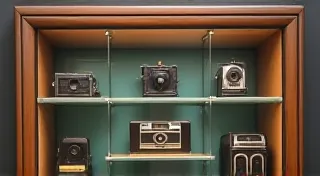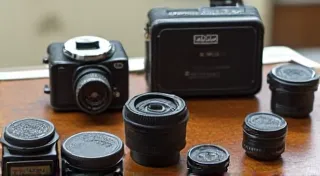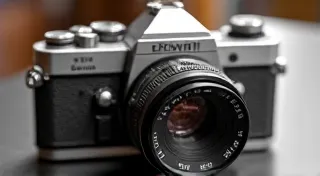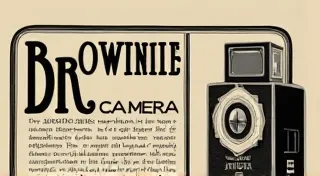The Brownie Reflex: A Unique Box Camera Design
The Brownie Reflex series stands apart from the rest of the Brownie family, offering a distinctive aesthetic and a surprisingly sophisticated photographic experience for its time. While most Brownies were simple, straightforward box cameras, the Reflex introduced a twin-lens reflex (TLR) design, a feature typically associated with more expensive and complex cameras. This article explores the details of these fascinating cameras and what makes them so appealing to collectors.
A Brief History & The “Why” of the Reflex
Kodak introduced the Brownie Reflex in 1935, aiming to provide an accessible and relatively affordable TLR experience to a wider audience. The original Brownie cameras were known for their ease of use, and the Reflex maintained that simplicity while offering a key advantage: a direct view of the image through a separate viewing lens. This eliminates the parallax error common in simpler cameras, resulting in more accurate composition. The Reflex series continued through various models until its discontinuation in the mid-1950s, each with slight variations in features and construction. Understanding the broader context of Kodak’s innovations during this period highlights the importance of the Brownie line. The success of the Brownie, and the eventual introduction of models like the Reflex, demonstrates a clear commitment to democratizing photography, moving it beyond the realm of professionals and enthusiasts with significant investment capital. For those interested in the full story of the Kodak Brownie and its place in photographic history, a deeper dive into The History of the Kodak Brownie: A Photographic Revolution is highly recommended.
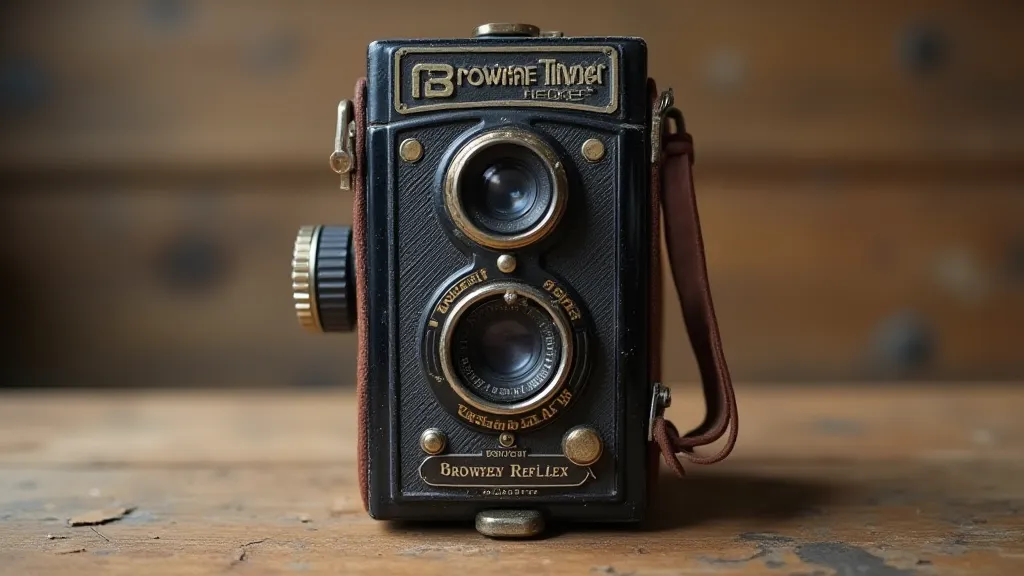
Models of the Brownie Reflex: A Closer Look
Several variations of the Brownie Reflex were produced, each with its own nuances. Understanding these differences is crucial for accurate identification and appreciation. The evolution of the Brownie line also involved other unusual and specialized models, some of which are highly sought after by collectors. Examining these varied models often reveals intriguing design choices and adaptations driven by both technological advancements and changing consumer preferences. Those fascinated by the broader spectrum of rare and unusual Brownie camera models might find Rare and Unusual Brownie Camera Models a compelling read. The design considerations often extended beyond the core functionality of the camera, incorporating stylistic elements and materials reflective of the era’s aesthetic sensibilities.
- Brownie Reflex I (1935-1937): The first model, it featured a fixed-focus lens and a simple shutter. It’s characterized by its bakelite body and leatherette covering. The design of the Reflex I prioritized ease of use and affordability, setting the stage for subsequent models.
- Brownie Reflex II (1937-1940): An improved version with a slightly better lens and a simple shutter speed selection (Instant/Time). It retains the bakelite body and leatherette covering. The “Instant/Time” shutter gave photographers slightly more control over exposure, a key development in making the Reflex a more versatile option.
- Brownie Reflex III (1940-1946): The third model brought subtle improvements, mainly in internal components and production techniques. It’s similar in appearance to the II. These incremental improvements often reflect lessons learned from production and user feedback, a testament to Kodak’s ongoing commitment to refining its designs.
- Brownie Reflex IV (1946-1951): This model introduced a slightly different body style, and the viewfinder was improved. The changes in body style subtly altered the camera's ergonomics, making it slightly more comfortable to hold and operate.
- Brownie Reflex V (1951-1954): The final model in the series, it’s recognizable by its streamlined appearance and subtle variations in construction. It maintains the core design principles of the earlier models. The V represented the culmination of the Reflex's design evolution, incorporating refinements and lessons learned throughout the series’ lifespan.
Identifying the exact model can sometimes be tricky, as markings can be worn or faded. Examining the body markings, lens details, and overall construction is key. Early models have a more distinct appearance than later ones. Operating vintage cameras often requires understanding their quirks and accessing original documentation. While many owners rely on intuition and shared knowledge, locating original Brownie Camera Manuals: Where to Find Them and How to Use Them can be incredibly valuable for troubleshooting and proper care. Understanding the technical specifications and best practices described in these manuals is crucial for ensuring the camera functions correctly and preserving its longevity.
Technical Specifications & Functionality
Despite its relatively simple design, the Brownie Reflex offers a reasonably good photographic experience. The fixed-focus lens covers a range from roughly 3 feet to infinity, making it versatile for most subjects. Shutter speeds are typically limited to “Instant” (for bright sunlight) and “Time” (for slightly overcast conditions). The TLR design allows for direct viewing through the top lens, ensuring accurate framing. The bottom lens is responsible for capturing the image on the film. While the simplicity of the Brownie Reflex is part of its charm, it also contributes to a specific aesthetic. The resulting images often possess a unique tonal character—a quality some photographers describe as exhibiting "chromatic ghosts"—and the nuances of this aesthetic are explored in more detail in Chromatic Ghosts: Unraveling the Brownie's Subtleties of Tone. The "chromatic ghosts" aren't necessarily defects; they're a characteristic of the lens and shutter combination, contributing to the camera's distinctive look.
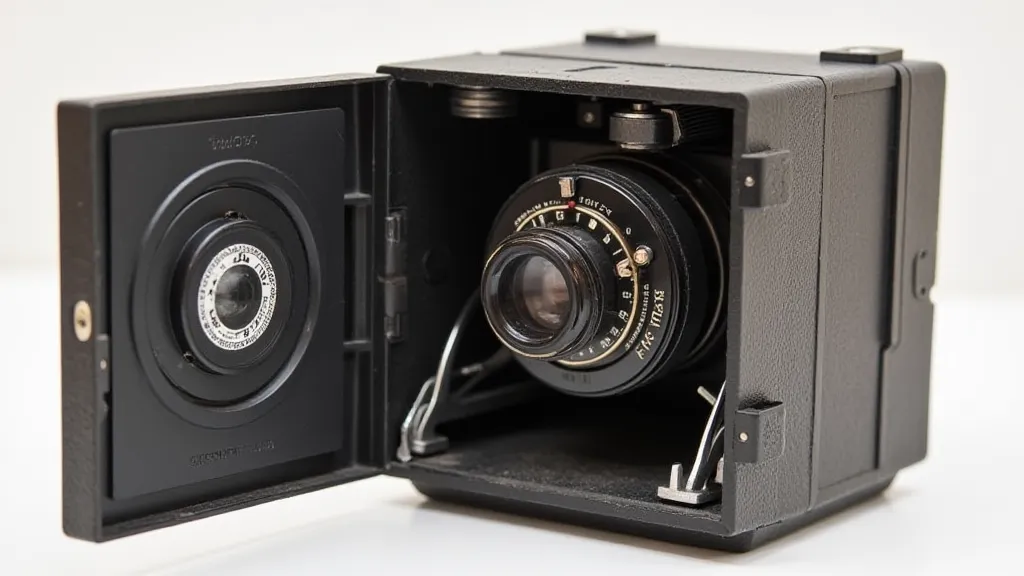
Collecting & Appreciation
Brownie Reflex cameras are increasingly sought after by collectors due to their unique design and historical significance. While not exceptionally rare, well-preserved examples in good working order command a premium. Factors influencing value include overall condition, originality (leatherette intact, original lens cap present), and working functionality. A pristine condition Brownie Reflex, especially one with its original box and documentation, can be a significant investment. The cameras offer a tangible link to a bygone era of photography, representing Kodak’s commitment to making photographic technology accessible to all. They represent a clever and accessible way of getting a twin lens reflex camera. The increasing demand from collectors isn't just about owning a piece of history; it's about appreciating the ingenuity and craftsmanship of a bygone era. Understanding the nuances of collector’s value can involve researching specific model variations and documenting their provenance.
Caring for Your Brownie Reflex
Like all vintage cameras, proper care is essential for preserving your Brownie Reflex. Keep it stored in a dry, dust-free environment. Avoid prolonged exposure to sunlight or extreme temperatures. The leatherette covering can be cleaned with a soft cloth and mild leather cleaner, but be careful not to damage the material. If the camera has been stored for an extended period, it's a good idea to have the shutter mechanism checked and lubricated by a qualified technician. Understanding the specific technical details of shutter mechanisms and overall camera maintenance can be complex. Owners often consult reference materials or seek the expertise of specialists to ensure the longevity and proper functioning of their vintage cameras. Regular cleaning and maintenance are vital not only to preserving the camera’s aesthetic appeal but also to ensuring its functional reliability.
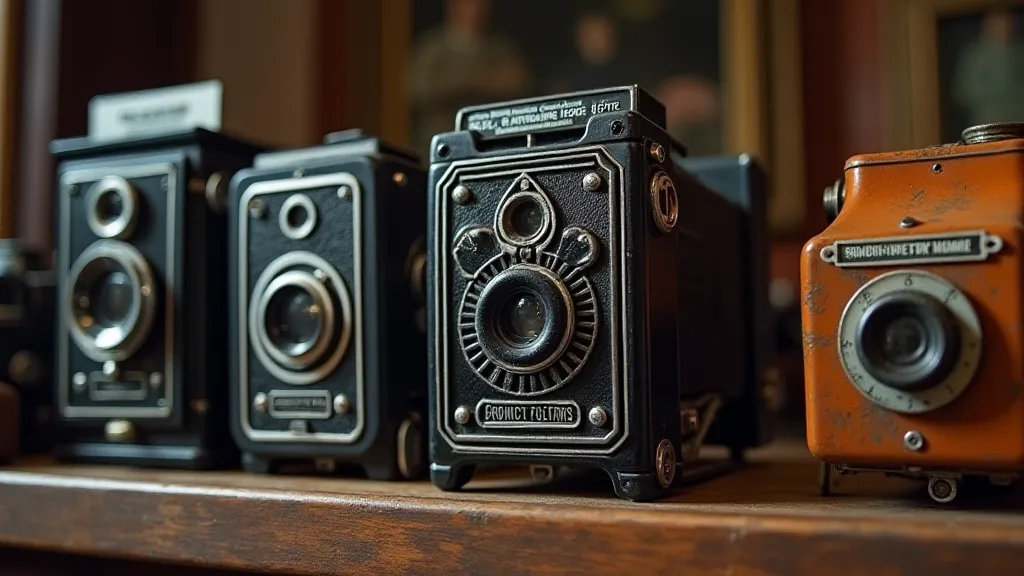
Troubleshooting Common Issues
Even with diligent care, vintage cameras can experience issues. A sticky shutter is a frequent problem, often due to dried lubricants. This can sometimes be addressed with careful cleaning and re-lubrication, but may require professional repair. Light leaks can also occur due to worn seals or damaged bellows. Identifying the source of a light leak requires careful inspection of the camera’s internal construction. Another common problem is the deterioration of the leatherette covering, which can crack or peel over time. Repairing or replacing the leatherette is a delicate process that requires specialized skills. The relative simplicity of the Brownie Reflex, compared to more complex TLRs, often makes it more accessible for amateur repair, though a degree of caution and research are always advised. Beyond the common issues, subtle problems like inaccurate focusing or uneven exposure can also arise, requiring careful diagnosis and potentially complex repairs.
Further Exploration
The Brownie Reflex represents a fascinating chapter in the history of photography, bridging the gap between simple box cameras and more sophisticated twin-lens reflex systems. Its enduring appeal lies not only in its unique design but also in its accessibility and the tangible connection it provides to a bygone era. For those wishing to delve deeper into the world of vintage cameras and photographic history, there are countless resources available, from online forums and communities to specialized books and museums. The journey of discovery is often as rewarding as the final product – a beautifully captured image made with a piece of history. The legacy of the Brownie Reflex extends beyond its immediate popularity; it influenced subsequent camera designs and contributed to the broader democratization of photography, bringing the joy and creative possibilities of image-making to a wider audience.
